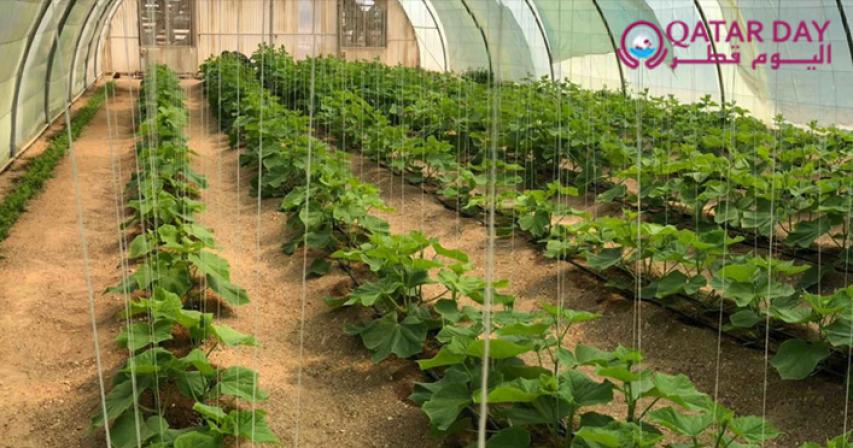Qur’anic Botanic Garden shares tips and tricks for naturally enhancing gardens
- 4 years ago

Experts suggest using easily available household products.
One of the upsides of staying at home during lockdown is not only having the time to do more of the things you love but exploring new hobbies, too. And whether you are a seasoned grower or are just starting out, the Qur’anic Botanic Garden has a series of tips and tricks for naturally enhancing gardens using easily available household products.
To help grow a love of gardening, we have a number of great ideas to share with the community. - Mohamed Hassona, a horticulture expert, Qur’anic Botanic Garden
Mohamed Hassona, a horticulture expert, QBG, says: “Keen gardeners already know the delights of growing and eating your own fruit and vegetables, while others devote hours to cultivating beautiful flowers and plants. So, to help grow a love of gardening, we have a number of great ideas to share with the community.
“For example, making your own fertilizer at home from simple household ingredients that rival expensive shop-bought ones, which will boost your growing power and are perfectly safe to use.”
One such ingredient is yeast, which can assist with growth and safely supports a plant’s vital processes and metabolism by providing important nutrients, especially nitrogen.
A yeast solution can easily be prepared by simply adding five grams of ready-made yeast to one liter of water, then adding a small teaspoon of sugar and continuously stirring for three minutes. After ensuring that all ingredients are completely dissolved, the solution should be stored in a warm place for two hours, after which it is ready for use. The canopy can be watered three times a week using a manual sprayer, preferably when a plant is thirsty and the soil is not saturated, since it will have a higher capacity to absorb the solution.

Mohamed Hassona, a horticulture expert, Qur’anic Botanic Garden.
Similar to yeast, pesticides that can protect your plants and contribute to their growth can be prepared at home using easily accessible household ingredients, which all contain antibacterial substances that inhibit microbial activity.
In a home blender, add a sliced onion, five cloves of peeled garlic, a spoon of red chili pepper powder, and a tablespoon of cinnamon powder and blend for approximately two minutes – until the mixture has the texture of soft dough. Then add one liter of warm water, and blend again for another three minutes until the mixture has absorbed all the water. Following this, filter the impurities from the mixture and store the solution in the fridge. When ready to use, add a pint of water and two ml of dishwashing liquid to 100 ml of the concentrated solution. Shake the bottle well, and spray your plants every three to five days. Ensure that it is kept out of the reach of children.
There is nothing more satisfying than growing your own garden and seeing – or eating – the fruits of your labor.” - Mohamed Hassona
“And to grow your own plants and flowers, you can easily propagate plants through air layering,” says Mr. Hassona. “The process works on shrubs, climbing plants, and even trees.”
First, select a strong piece of stem, and use a knife to remove a five centimeter ring from the outer layer of the stem. Then, take a plastic bag – either transparent or dark – and open it at both ends, so that you can pass the whole stem through the bag. This will serve as a soil container. One end can then be sealed with adhesive tape and filled with soil from the garden.
Following this, water the soil and tightly seal its top side with adhesive tape. If the bag is large, bind the middle section to help the soil stick and generate roots quickly. The bag shouldn’t need watering again, but if it does, add water from the top, without loosening the tie. The new stem can be separated from the mother stem using a sharp knife after white roots begin to emerge from the bag ‒ an indication of a new plant. You can then cut the stem directly underneath the bag, while keeping the roots attached to the soil. Plant the new stem in the garden.
.jpg)
QBG experts suggest using readily available household products as fertilizers and pesticides.
“And this is just the beginning,” says Mr. Hassona. “There is nothing more satisfying than growing your own garden and seeing – or eating – the fruits of your labor.”
For more gardening ideas, follow QBG – a member of Qatar Foundation – on Instagram: QuranicBotanicGarden; Facebook: Qur'anic Botanic Garden; and Twitter: @QuranicGarden
Source: Qatar Foundation
Comments